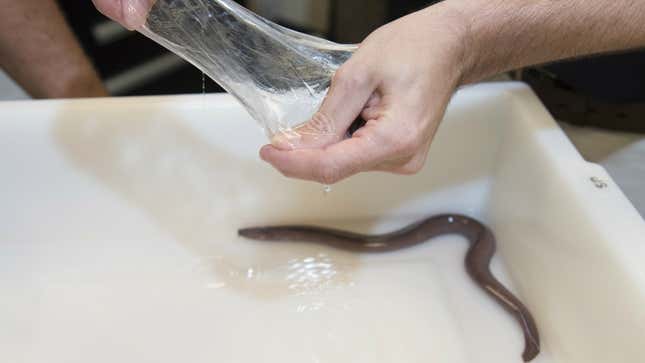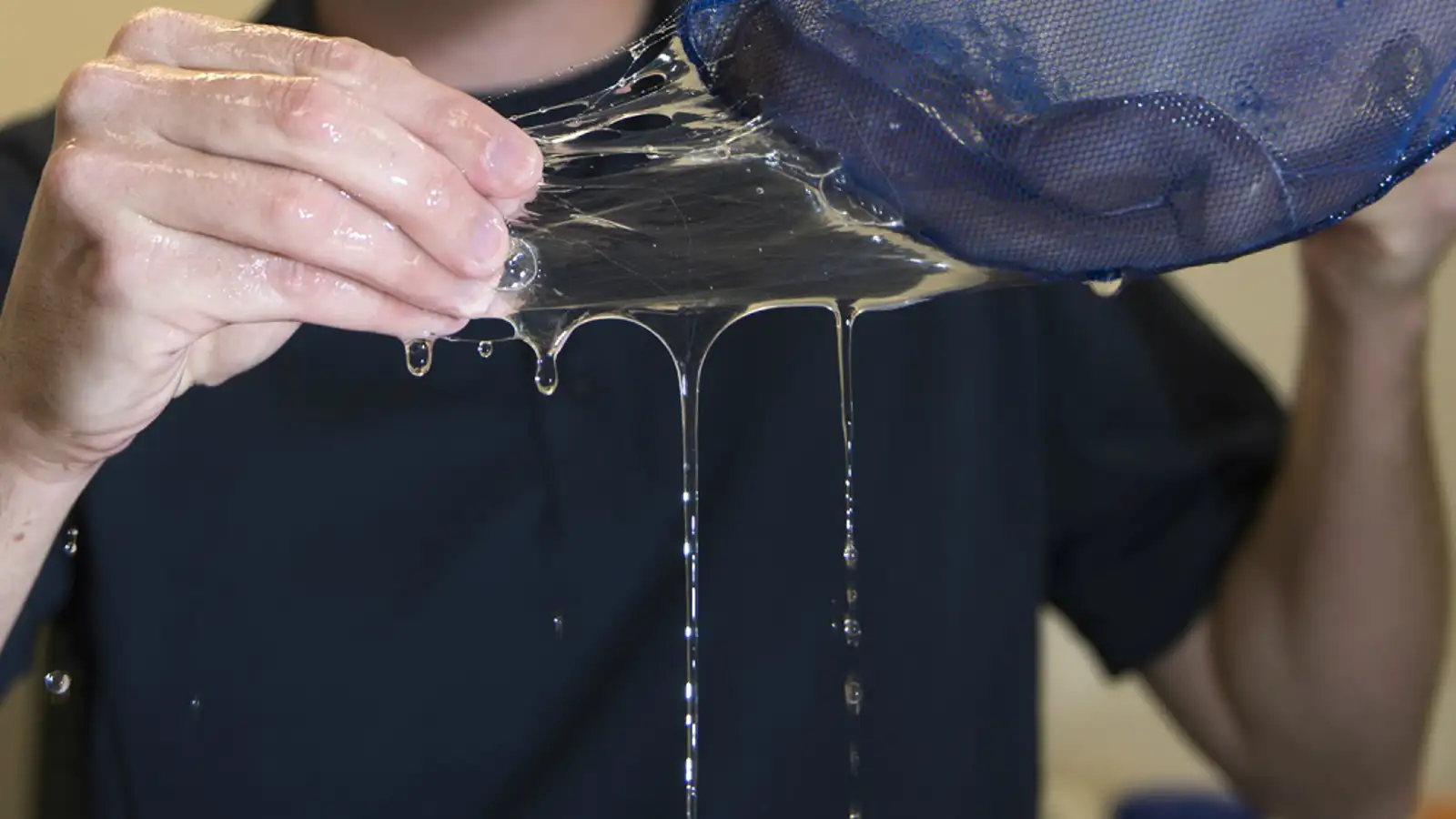At first glance, the life of a hagfish—also known as the slime eel—may not seem very inspiring. The blind, jawless fish scours the seafloor in search of dead sea creatures to eat. But when threatened, a hagfish reveals its strange Spider-Man-like power: It spews forth gummy, gelatinous goop that clogs up the predator’s gills, or just leaves them with a mouthful of tacky gunk.
It’s hard not to be impressed by such effective self-protection. Now two scientists at the US Navy are betting that the hagfish’s slimy defense mechanism could wind up helping humans, too.
“Our goal is to produce a substance that can act as non-lethal and non-kinetic defense to protect the warfighter,” Josh Kogot, biochemist at the US’s Navy’s surface warfare center, said on the Navy’s website. He and his colleague, military materials engineer Ryan Kincer, have created a synthetic version of the slime for just this purpose.

Among the more appealing properties of the slime is that a little hagfish goo goes a long way. It is composed of two crucial protein-based components. The first is a thread—which can reach up to 15 centimeters (5.9 inches) in length when fully extended—coiled and spring-loaded like a can of prank snakes. When the hagfish emits its goopy blitz, the seawater dissolves the protein, letting the threads shoot forth. Meanwhile, the second protein binds to water, gumming up the flow of water between the threads, creating “a three-dimensional viscoelastic network,” as Kincer put it.
“The coiled up thread behaves like a spring and quickly unravels upon contact with water due to stored energy,” he said. ”Studies have shown the hagfish secretion can expand up to 10,000 times its initial volume.”
For a visual, here’s how resilient hagfish slime is out of water:
This should give you an inkling of why scientists have been trying to recreate the slime-binding protein threads for a while now. Removed from water, the hagfish slime fibers are soft yet incredibly strong—sort of like spider silk—and could be ideal for protective gear. (Kogot likens the threads to Kevlar, best-known for its use in bulletproof vests.) At the same time, the protein-based threads could prove to be sustainable alternatives to synthetic oil-based materials like nylon or spandex. Though it’s been possible to bundle fibers from the threads of hagfish slime, Kincer and Kogot may have finally pulled off a process that might allow for larger-scale production—by creating a synthetic.
The two scientists re-rigged the bacteria E. coli to produce two of the proteins from hagfish slime. When combined with a solution, these protein threads uncoiled. Under an electron microscope, the threads in the lab goop and the hagfish goop proved a match.
Though it’s not yet clear how exactly the Navy might apply its hagfish-inspired technology, the scientists seem to have plenty of ideas.
Synthetic hagfish slime could prove useful in, for example, ballistics protection, firefighting, or anti-shark spray, said Kogot. “The possibilities are endless.”




